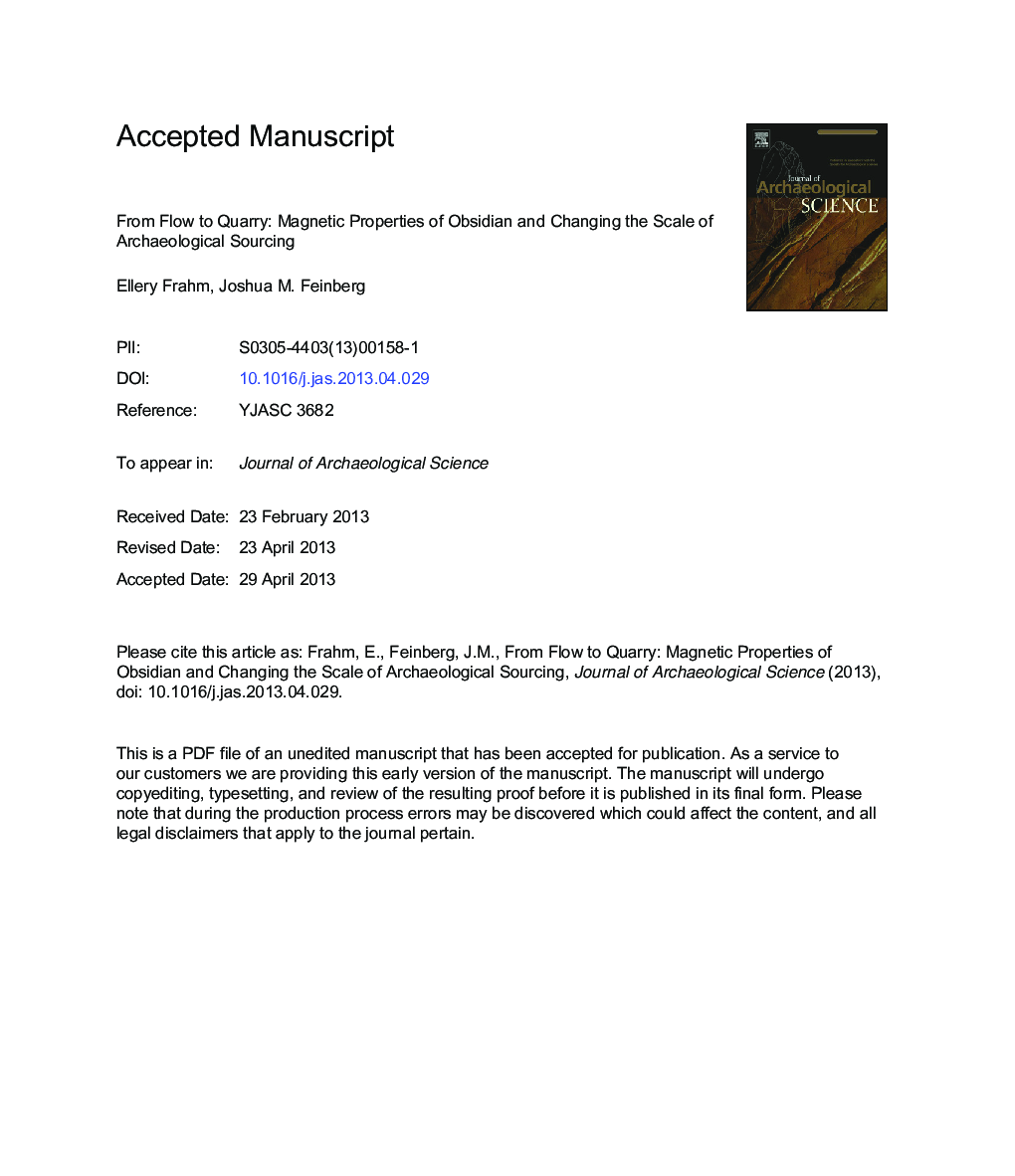| Article ID | Journal | Published Year | Pages | File Type |
|---|---|---|---|---|
| 10498911 | Journal of Archaeological Science | 2013 | 54 Pages |
Abstract
Previous studies have endeavored to use petrophysical traits of obsidian, particularly its magnetic properties, as an alternative to conventional geochemical sourcing, one of the greatest successes in archaeological science. Magnetic approaches, however, have not seen widespread application due to their mixed successes. In a time when geochemical analyses can be conducted non-destructively, in the field, and in a minute or two, magnetic measurements of obsidian must offer novel archaeological insights to be worthwhile, not merely act as a less successful version of geochemistry. To this end, we report the findings of our large-scale study of obsidian magnetism, which includes 734 geological obsidian specimens and 97 artifacts measured for six simple magnetic parameters. Based on our results, we propose, rather than using magnetic properties to source artifacts to a particular obsidian flow (inter-flow sourcing), these properties are best used to differentiate quarrying sites within an individual flow (intra-flow sourcing). Our results also demonstrate that certain magnetic properties are highly affected by ancient knappers' material selection criteria. Furthermore, depending on the spatial scales of variation, which likely vary from flow to flow, we envision several potential applications of this approach, including integration into minimum analytical nodule analysis (MANA). Magnetic data appear to shift the scale of obsidian sourcing from flows to quarries and, in turn, enable new insights into raw-material procurement strategies, group mobility, lithic technology, and the organization of space and production.
Related Topics
Physical Sciences and Engineering
Materials Science
Materials Science (General)
Authors
Ellery Frahm, Joshua M. Feinberg,
